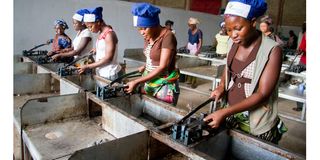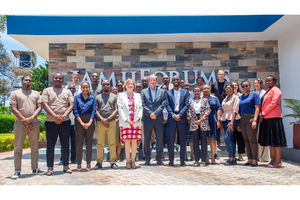Manufacturing in EAC: Are progress and development at a standstill?

Creating a conducive business environment that enhances investment, innovation, and growth in the manufacturing sector is crucial for the economy of EAC. PHOTO | COURTESY
What you need to know:
- EAC partner states at the country and sectoral levels must be committed to work seriously by adopting revolutionary and innovative approaches to implementing industrial policies
The Swahili people can explain almost anything with a proverb. For instance, “Hata Mbuyu ulianza kama mchicha” translates into English as “Even the Baobab tree was once an Amaranth.” Yes, a baobab tree was once such a small plant over a while, it grew into something huge.
Today, I am talking about industrialization in East Africa and how it needs to develop from an Amaranth into a baobab tree! When will it grow and become a ‘’baobab tree in Tanzania and East Africa?
Ideally, we should have started long ago with a working cottage industry. During the pre-colonial times, we had some industries.
In the coastal regions, for instance, a fishing industry, with fish being dried and preserved for trade with inland communities.
Blacksmithing, pottery, and basket weaving industries were also there. Why our households today do not manufacture various items at home? Why do we lack a cottage industry where a person or a family can start a minute manufacturing at home, using small machines or traditional methods, and grow to be a huge enterprise? It requires political will and innovation.
Yes, just some food for thought.
A recent story in The Citizen shows The East African Community (EAC) bloc manufacturing sectors are a huge concern due to their limited size and slow expansion.
The industry growth rate decreased from 5.3 percent between 2005 and 2010 to 4.6 percent between 2010 and 2021, falling short of 10 percent annual growth rate envisioned in the EAC Industrialization Policy (2008-2032).
The anticipated double-digit growth is far from this decline. Less than 8 percent of the current GDP in EAC is contributed by manufacturing, down from over 10 percent in the past.
This pattern casts doubt on the ability of industrialisation to change structures.
To address this challenge, EAC partner states at the country and sectoral levels must be committed to work seriously by adopting revolutionary and innovative approaches to implementing industrial policies.
Several policies are in place, such as the Cotton and Apparel (CTA) Strategy, Leather and Leather Products Strategy, Automotive Industry Action Plan, and Pharmaceutical Manufacturing Plan of Action established to reduce the current 70 percent medicine importation rate.
However, the question is why these policies are not working and why implementation has been poor in EAC?
Despite these strategies and plans, there seems to be a lack of effective implementation, hindering the industrialization drive in the region. There could be several reasons, like inadequate resources, lack of political will, weak institutions, and poor stakeholder coordination.
Therefore, to address these challenges, the EAC member states must take urgent action to ensure the effective implementation of policies, which includes mobilising adequate resources, strengthening institutions, promoting public-private partnerships, and improving stakeholder coordination.
Creating a conducive business environment that enhances investment, innovation, and growth in the manufacturing sector is crucial for the economy of EAC.
We have very commendable policies, but their success will depend on how we implement them. Likewise, the EAC member states must work together to address the challenges hindering them from implementing them.
Succeeding in this will enable the region to achieve self-sufficiency create employment opportunities, and improve its economy.
Manufacturing is a critical sector for the economic growth and development of East Africa. By 2032, the manufacturing sector will contribute at least 15 percent of the total GDP.
The products manufactured must account for 25 percent of intra-regional trade.
That is possible if the EAC member states cooperate to strengthen regional integration, advance industrialisation, and foster an environment that is conducive to investment from the private sector.
The infrastructure, human capital, and technological advancements must sustain industrialisation.
By doing this, East Africa may utilize its wealth of natural resources, labor force, and advantageous position to be a manufacturing hub in Africa.





